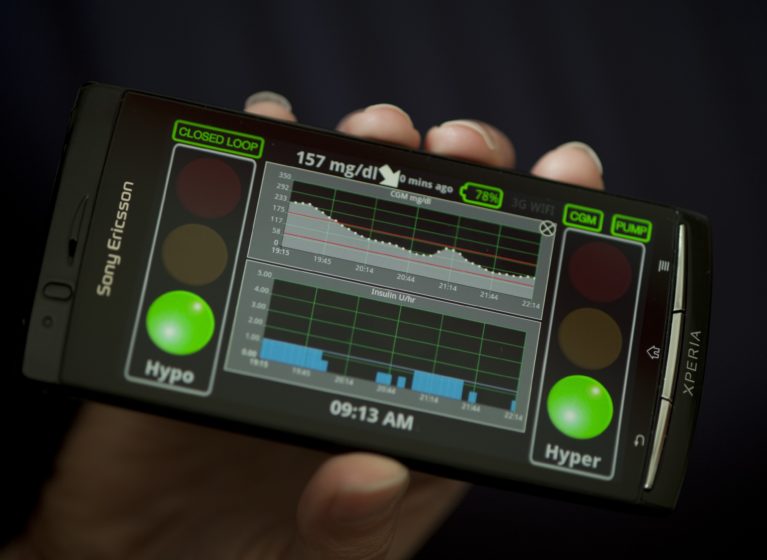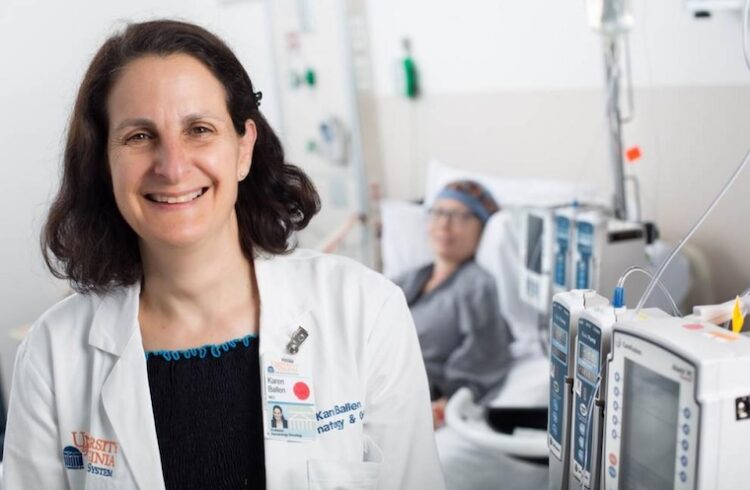
The University of Virginia School of Medicine has launched the first U.S. outpatient trial of a UVA-developed artificial pancreas that could make it easier for type 1 diabetes patients to manage their condition.
A research team led by Patrick Keith-Hynes, PhD , and Boris Kovatchev, PhD , reconfigured a smartphone into a hand-held device to monitor a patient’s insulin pump and continuous glucose monitor (CGM). The device is intended to automate much of the work of monitoring and maintaining safe blood sugar levels now performed by patients such as 40-year-old Charlottesville resident Justin Wood, the first patient to participate in the UVA outpatient trial.
Living with type 1 diabetes
Diagnosed as having type 1 diabetes about 28 years ago, Wood uses an insulin pump to help regulate his blood sugar but must check his blood sugar by pricking his finger at least three to five times daily. He also needs to precisely estimate his food consumption – especially the amount of carbohydrates – to help properly adjust his insulin supply.
While managing his diabetes is largely second nature, Wood says, “It’s something you think about – either in the back of your mind or the forefront of your mind – almost constantly.”
Automating diabetes care
Wood tested a new approach when he checked into a Charlottesville hotel the night of April 19 for his two-day outpatient trial. He immediately liked the device. “The operating interface was very slick and very fast,” he says. “The extra second or two you save pressing buttons adds up when you have to do it every day.”
Beginning the following morning, Wood used the device to automatically read and balance his blood sugar level. At mealtimes – as with his standard insulin pump – he entered what he ate to help balance his blood sugar quicker. He came away impressed with the potential of the artificial pancreas.
“The device automates a lot of the tracking and monitoring I do now,” he says. Wood estimated he could reduce the number of times he pricked his finger for blood sugar tests from at least three to five per day to no more than two a day. He sees the artificial pancreas as “a step forward in technology that could change my view and outlook on life.”
For Kovatchev, the outpatient trial was a significant change from previous inpatient trials at UVA where patients were monitored in a hospital room. “To see no visible medical items around the patient – it was an amazing feeling to have.”
Next steps in testing
The UVA team and other participants in the JDRF’s Artificial Pancreas Project – the University of California, Santa Barbara; Montpellier University Hospital in France; and the Universities of Padova and Pavia in Italy – will continue outpatient testing through 2013 at UVA and three other locations. Researchers plan to enroll a total of 120 patients in the trial.


